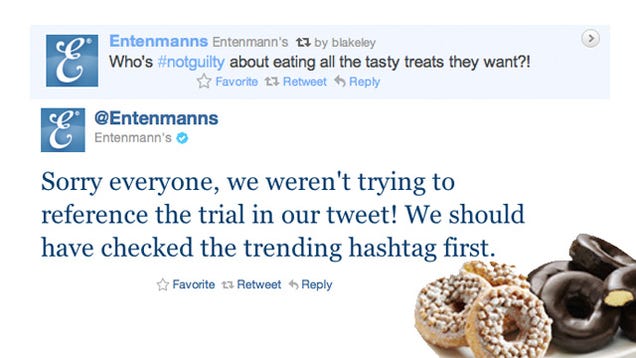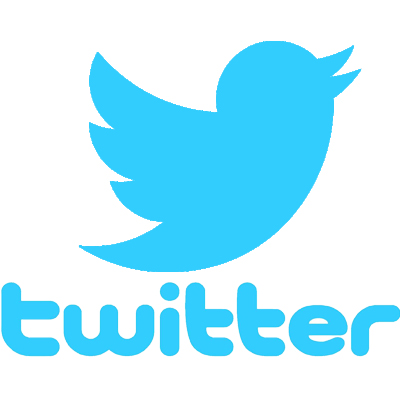Twitter has been defined by its owners and researchers as an information company (The Economist, 2010, p.5) and also as a major representative of electronic word-of-mouth (eWOM) communication which is fast becoming an exceptionally effective form of marketing (Zhao and Rossen, 2009; Bulearca 2010; Jansen et al., 2009). With over 288 million monthly active users and over 500 million Tweets being sent per day, Twitter is a powerful marketing tool, if you know how to use it.
So how do you successfully market yourself through Twitter? There are so many good examples of corporate Twitter accounts that are doing it right. From Tesco Mobile’s witty Twitter account which catches users attention with its charmingly sarcastic tweets to Starbucks’ more personal approach of reaching out and connecting with each follower. Nevertheless there are just as many Twitter marketing flops as successes and the following are three examples of Twitter campaigns gone horribly wrong and what can be learned from them.
#1 #McDStories
One of the most memorable Twitter fails was by McDonald’s who created the hashtag #McDstories hoping that users would share their favourite and happiest McDonalds moments but it backfired spectacularly with Twitter users sharing their worst experiences of the fastfood chain. And share they did! Tweets flooded in with users accusing the franchise of giving them food poisoning, serving up pig meat from gestation crates and dishing up a BigMac containing a finger nail! Within two hours the campaign had been pulled but the #McDStories hashtag is still gathering steam and was most definitely a McDisaster!

Lesson learnt
- If you want praise and positive feedback, ask your fans! People LOVE to complain and Twitter is one of the easiest and fastest ways to publicly moan. Instead had McDonalds asked its 56 million Facebook fans to share their heart warming stories, perhaps they would have received them.
- Do not use hashtags that could be used ironically. Somebody will have had a bad experience and the reality is they’re going to tweet about it when they see that hashtag
#2 Entenmann’s #notguilty
Another epic Twitter marketing fail was when baked goods manufacturer Entenmann caused outrage when they used the hashtag #notguilty to promote their low-calorie food selection but at the same time the hashtag was already trending in the wake of the controversial Casey Anthony not guilty murder verdict. Maybe it was a bad joke or genuine mistake, nevertheless Entenmann pleaded ignorance and deleted the tweet.

Lesson learnt
- Know what’s trending. Before joining in with hashtags make sure you know what people are talking about and think before you tweet
- Check if people are already using your hashtag. By doing so you avoid your message being misinterpreted.
#3 Epicurious promoting scones in wake of the Boston bombings.
This is another classic example of ‘what the hell were they thinking?!’. The food website in light of the Boston marathon bombings posted this to its followers:
Of course the tweet sparked outrage in the Twittersphere with users being understandably appalled and offended that Epicurious thought it was ok to exploit the tragedy to promote its products. The tweet was deleted and the company only made it worse when instead of giving a genuine apology they decided to repeatedly tweet the same template ‘apology’.
Lesson learnt
- Do not attempt to capitalize from tragedy. It doesn’t look good or end well.
- Give a genuine apology! Actually engage with your customers individually and do not respond with over 100 of the exact same statement.
The following three campaigns are examples of successful Twitter marketing:
- Ben and Jerry’s fair tweets
This is a great example of a Twitter campaign done right. Ben and Jerry’s in aid of Fair Trade Day gave users a simple way to promote fair trade. Users would tweet as normal and then recycle unused Twitter characters by auto-replacing them with a message and link to promote the cause.
Why it worked? The campaign was extremely simple and required very little from the user. The idea was also very well positioned, taking advantage of the social and viral nature of Twitter. A very clever campaign for a great cause!
- Domino’s #letsdolunch
In order to boost lunch time orders Domino’s pizza ran an offer from 9 a.m. to 11 a.m. on March 5th, 2012 giving users a wonderful incentive and reason to celebrate: cheaper pizza! Domino’s took 0.01p off the price of their ‘Pepperoni Passion Pizza’ every time someone tweeted the hashtag #letsdolunch, dropping from £15.99 to £7.74.

Why it worked? The campaign was a quick, cheap and easy way to attract more fans and encourage customer loyalty by providing incentives to being a follower. It also encouraged cross social media interaction as people would tweet but have to go the Facebook page to see the current price of the pizza.
- Starbucks tweet a coffee
Theres no denying that starbucks have built an extremely strong online presence via social media, and the tweet a coffee campaign was another success for the coffee giant. Users were able to purchase a coffee for anyone on Twitter by tweeting @tweetacoffee which would connect their Starbucks account to their Twitter account, and a $5 gift card would be given.
Why it worked? The campaign was extremely unique and was easy for customers to participate in. Starbucks knows their audience extremely well and they know what they like and how to successful use technology to engage with their customers.
Lessons learnt
- Keep it simple. Make it easy for users to engage in your campaign and have a short and memorable hashtag.
- Be creative! Many digital marketing channels exist and by having an innovative and memorable marketing campaign customers will have a lasting impression.
- Make it affordable. This will encourage a wide pool of users to engage with the campaign.
An academic perspective
It has been argued that Twitter is only a ‘hype’ (The Economist, 2010), and that it is not actually that helpful for a business (Dorbian, 2010), but instead it is useful for “fermenting social revolutions” (Campaign, 2009, p.21; Bulearca 2010). Practitioners have also highlighted failed Twitter campaigns (offensive skittle tweets – Campaign, 2009; HMV staff taking over the retailer’s Twitter account to vent their anger at being fired), which demonstrates the inappropriateness of Twitter (Bulearca 2010).
Nevertheless the fact remains that Twitter is a major form of e-WOM and people have increasingly begun to base their decisions on e-WOM (Smith et al., 2007). Many companies such as Dell, Best Buy or Waterstones, have benefited via Twitter marketing (Moran, 2010; Davidson, 2009). Furthermore, considering the speed and scale of the internet the effects of this marketing technique are more impactful (Bulearca 2010) and can create fast product adoption or heightened sales figures and encourage brand loyalty (Trusov, 2009; Bulearca 2010; Jansen et al., 2009).
In conclusion Twitter does have the potential to be extremely damaging for a company but with a fun clear message, engaging content and by knowing your customers, Twitter campaigns have proven to be an exceptional marketing tool.
References
Bulearca, M., & Bulearca, S. (2010). Twitter: a viable marketing tool for SMEs.Global Business and Management Research: An International Journal, 2(4), 296-309.
Campaign, 2009. Twitter, Campaign – the annual 2009, 11 December, p.21;
Davidson, D., 2009. How to…put a price on your social media strategy, Revolution Magazine – The Insider’s Guide to Digital Marketing 2009, November, pp.29-33;
Dorbian, I., 2010. Social media taps its way into b2b marketing plans, min’s b2b, 1 February, p.6;
Jansen, B.J., Zhang, M., Sobel, K. & Chowdury, A. 2009, “Twitter power: Tweets as electronic word of mouth”, Journal of the American Society for Information Science and Technology, vol. 60, no. 11, pp. 2169-20.
Moran, G., 2010. Can your franchise benefit from social media?, Entrepreneur Magazine, January, pp.110-115;
Smith, T., Coyle, J.R., Lightfoot, E. and Scott, A., 2007. Reconsidering models of influence: the relationship between consumer social networks and word-of-mouth effectiveness, Journal of Advertising Research, Dec, pp.387-397
The Economist, 2010. A world of connections – a special report on social networking, The Economist, 30 January;
Trusov, M., Bucklin, R.E. and Pauwels, K., 2009. Effects of word of mouth versus traditional marketing – findings from an internet social networking site. Journal of Marketing, vol.73, Sept, pp.90-102;
Zhao, D., & Rosson, M. B. (2009, May). How and why people Twitter: the role that micro-blogging plays in informal communication at work. In Proceedings of the ACM 2009 international conference on Supporting group work (pp. 243-252). ACM.
